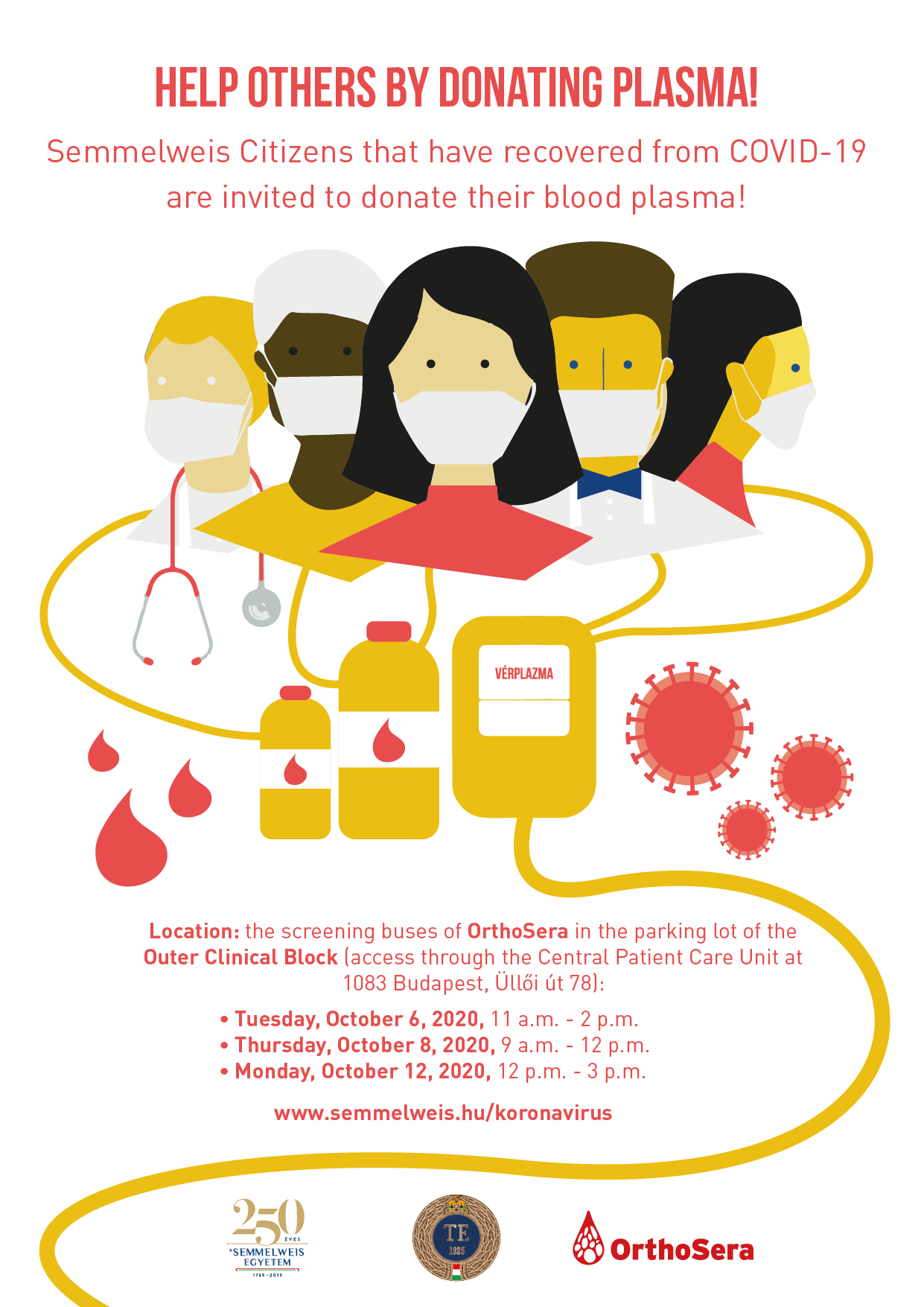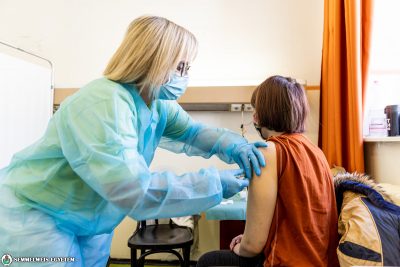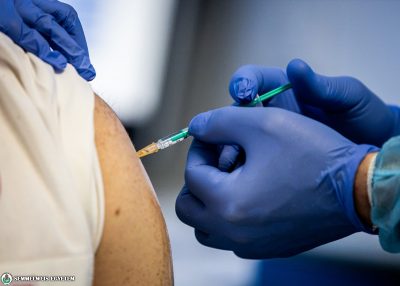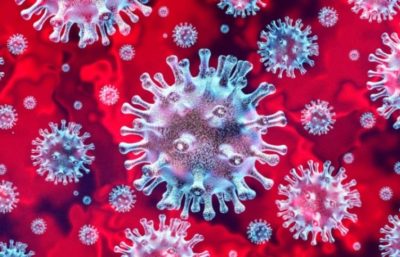After the outbreak of the second coronavirus wave at the end of summer, not only the number of positive cases, but the number of those requiring hospital treatment has also increased. There are still few targeted therapies available to treat these patients. “Although there are some promising results with certain antiviral drugs, the most efficient treatment is still convalescent plasma therapy,” explained Dr. Attila Szabó, Semmelweis University’s Vice-Rector for Clinical Affairs and the president of the Clinical Center. Therefore, it is crucial that as many recovered patients – and Semmelweis Citizens – as possible donate blood plasma, as the life-saving serum can only be made from their blood.
Those Semmelweis students and staff members can donate blood plasma who have recovered from COVID-19 and at least 4 weeks have passed since the appearance of symptoms, or at least 2 weeks since recovery. Any person that has recovered from the disease can donate plasma, regardless of the type of symptoms they had or the severity of the illness – so even those that did not require hospital treatment. Donors will first have a blood sample taken, in the OrthoSera screening buses located in the parking lot of the Outer Clinical Block (access through the Central Patient Care Unit at 1083 Budapest, Üllői út 78), at the following dates:
- Tuesday, October 6, 2020, 11 a.m. – 2 p.m.
- Thursday, October 8, 2020, 9 a.m. – 12 p.m.
- Monday, October 12, 2020, 12 p.m. – 3 p.m.
It is not required to arrive to the blood donation on an empty stomach, as the samples will be examined with the sole purpose of determining whether they have a sufficient amount of antibodies. Similar to other diseases, the amount of antibodies the body produces to fight COVID-19 can differ, but for convalescent plasma therapy to be efficient, their level has to reach a certain value, Dr. Szabó pointed out. No sign-up is needed to provide the blood sample, but everyone is requested to bring with them their previous PCR test results if possible.
As a first step, a vial of blood will be drawn from each donor, after which those who are eligible to donate plasma based on the level of antibodies found in their blood will be notified separately. The process of drawing plasma is similar to donating blood, but only the part of the blood containing proteins and antibodies will be used.
The blood of patients who have recovered from the disease contains antibodies made by the body in response to infections. In the course of convalescent plasma therapy, these antibodies from the plasma of recovered COVID-19 patients are used to treat the disease. Medical tests and scientific studies during the pandemic have shown that using this healthy serum can reduce the so-called “cytokine storm,” which is an excessive immune reaction that forms in the blood of seriously ill patients. Plasma therapy has been used with success on several patients at Semmelweis University; one of them was able to be taken off a ventilator after 10 days as a result of the therapy.
Ádám Szabó
Translation: Tamás Deme
Featured image: Bettina Gál



